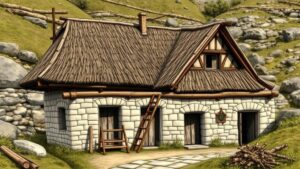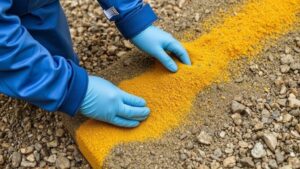How the Celts Extracted and Processed Copper Ore
How the Celts Extracted and Processed Copper Ore
The Celts, a group of tribal societies in Iron Age and Medieval Europe, were known for their advanced metalworking skills, particularly in copper and bronze. Their ability to extract and process copper ore played a pivotal role in their economy, culture, and technological progress. This article delves into the methods employed by the Celts in the extraction and processing of copper ore, supported by archaeological evidence and historical records.
Historical Context of Copper Use Among the Celts
The Celts inhabited regions across Europe, including modern-day Ireland, the UK, France, and parts of Central Europe. Copper was one of the first metals used by humans, with evidence dating back to around 5000 BCE. The transition from the Stone Age to the Bronze Age marked a significant change in technology and trade, with copper serving as a foundational material for various tools and weapons.
Methods of Copper Ore Extraction
The extraction of copper ore by the Celts involved several techniques that were both innovative and practical for their time. Key methods included:
- Open-Pit Mining: This method involved removing soil and rock to reach copper deposits near the surface. Evidence of open-pit mining has been found in sites such as Great Orme in Wales, where substantial copper deposits were exploited.
- Adit Mining: When copper ore was located deep underground, the Celts dug horizontal tunnels known as adits. This labor-intensive method allowed miners to reach and extract valuable ores while minimizing the risk of collapsing tunnels.
- Surface Collection: In some locations, copper ore was available on the surface or in riverbeds. The Celts utilized simple tools such as hammers and chisels to remove ore fragments with minimal effort.
Processing Copper Ore
Once extracted, copper ore underwent several stages of processing to produce usable metal. This process included:
- Crushing and Grinding: The first step involved crushing the ore to break it down into smaller pieces. This was done using stone hammers or larger pounding devices made of wood. Grinding helped segregate the copper-bearing minerals from the waste material.
- Smelting: The crushed ore was then subjected to smelting, where it was heated in a furnace to extract copper. Celts utilized wooden furnaces and bellows to increase airflow and raise the temperature. Archaeological evidence indicates that they could achieve temperatures exceeding 1,000 degrees Celsius, critical for melting copper.
- Refining: The final step in processing involved refining the copper to remove impurities. This could be achieved by re-melting the copper and allowing the slag (waste material) to separate out. result was a purer form of copper suitable for crafting tools, weapons, and ornaments.
Trade and Cultural Significance
The copper extracted and processed by the Celts had far-reaching implications. Trade routes were established for copper and bronze artifacts, facilitating cultural exchanges between tribes. The importance of copper can be illustrated through the discovery of hoards, such as the from the Iron Age site of Snettisham in Norfolk, England, where valuable copper and gold items were found, highlighting the metals status in society.
Challenges and Environmental Impact
While the Celts demonstrated impressive skills in copper extraction and processing, these activities were not without challenges and consequences:
- Resource Depletion: The intensive mining of copper ore led to localized resource depletion. Over-extraction in certain areas forced communities to seek new deposits, prompting migration.
- Environmental Changes: Mining and smelting processes undoubtedly altered the local environment. Vegetation loss and soil erosion were direct results of these activities, affecting agricultural practices.
Conclusion
The extraction and processing of copper ore by the Celts were remarkable feats of ancient ingenuity. Their advanced mining techniques and metalworking skills contributed to significant economic and cultural developments. By understanding these methods, we can appreciate not only the technological accomplishments of the Celts but also their lasting impact on the history of metallurgy in Europe.
Actionable Takeaways
- Explore archaeological sites like Great Orme to gain insights into ancient mining practices.
- Study historical trade routes to understand the broader economic implications of copper extraction.
- Consider the environmental impacts of ancient industries and how they resonate with contemporary mining practices.


